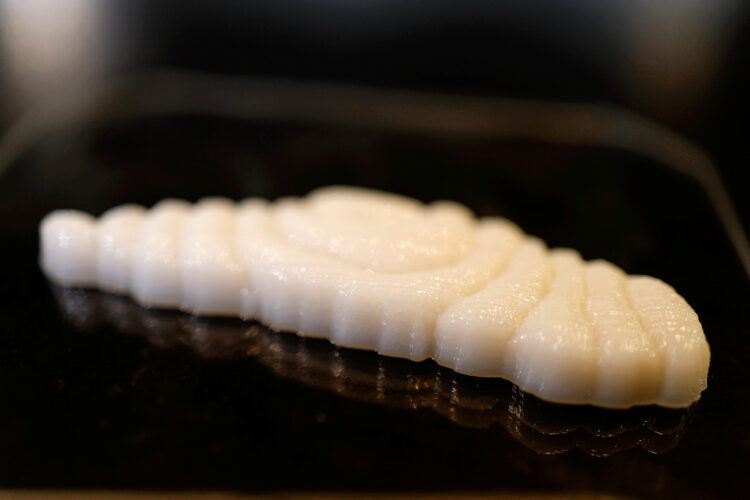Israel’s Steakholder Foods has partnered with Singapore-based Umami Meats to create the first ever 3D printed fish that is a ready-to-cook fillet, grown in a laboratory from cultivated cells.
While numerous companies’ lab-grown chicken and beef have drawn both positive and negative attention, few corporations have ventured into the business of cull-cultivated seafood.
Umami intends to bring its initial products to market in 2024, first in Singapore and then, after navigating regulation logistics, countries like Japan and the United States.
Using grouper, Umami extracts cells and grows them into fat and muscle. Steakholder Foods takes the lab-grown flesh and adds it to a “bio-ink” appropriate for 3D printers. The result is a slender fillet that mirrors the properties of ocean-caught fish.
Conventional fish is still far cheaper to bring to shelves and seafood counters than cell cultivation, so the fish cells are currently diluted with plant-based ingredients in the bio-ink.
“As time goes by, the complexity and level of these products will be higher, and the prices linked to producing them will decrease,” said chief executive of Steakholder Foods, Arik Kaufman.
The seafood cell cultivation process is more basic when compared to the method for beef, however, there are some disadvantages.
Cow stem cells have been researched significantly but much less is realized about cells from fish, said Umami’s chief executive, Mihir Pershad.
“We have to figure out what the cells like to eat, how they like to grow, and there’s just not so much literature to start from,” he said.
“The number of scientists, you can imagine, working on fish stem cell biology is a small fraction of those working on animal cells and human cells.”
Culture-cell meat and seafood companies have drawn billions in investment money, attracting financing from Bill Gates, Whole Foods founder John Mackey, and Richard Branson, however bringing lab-grown meat to market is in more advanced stages compared to fish. While proponents argue the non-traditional protein is better for the environment, critics have concerns.
Cultured-cell, or cultivated, or lab-meat (for lack of a more palatable term) is harvested in steel bioreactors from animal stem cells that are fed a combination of oxygen, vitamins, sugars, and fats. The added fats will ensure consumers don’t miss out on the traditional juicy burger flavor, however, since lab-meat alternatives contain no animal fats, detrimental seed oils that are packed with linoleic acid will be used as the fat source. Excessive consumption of linoleic acid in the American diet is already a proven driver of chronic disease, and cultivated meats will only exacerbate the situation.
While greenhouse emissions serve as the backbone of reasoning for lab-meat, a study published in 2020 by the Johns Hopkins Center for a Livable Future determined that cultivated meat produces five to 21 times more emissions than plant proteins like peas and tofu.
A final hurdle before hitting shelves, regulators are now contemplating how to label the product. Groups representing American farmers have been lobbying the USDA to accurately brand culture-cell meats as separate from their own pasture raised cows.
“All I’m asking is that it be clearly identified because there’s going to be a difference when that consumer eats that product,” said Todd Wilkinson, president of the National Cattlemen’s Beef Association. “And my product doesn’t have to be genetically engineered.”
Wilkinson wants the USDA to require products from UPSIDE and GOOD to bear the markers “cultured meat” or “lab grown.”
“Something that just stands out and lets the consumer know what they’re eating,” he said.


















Add comment